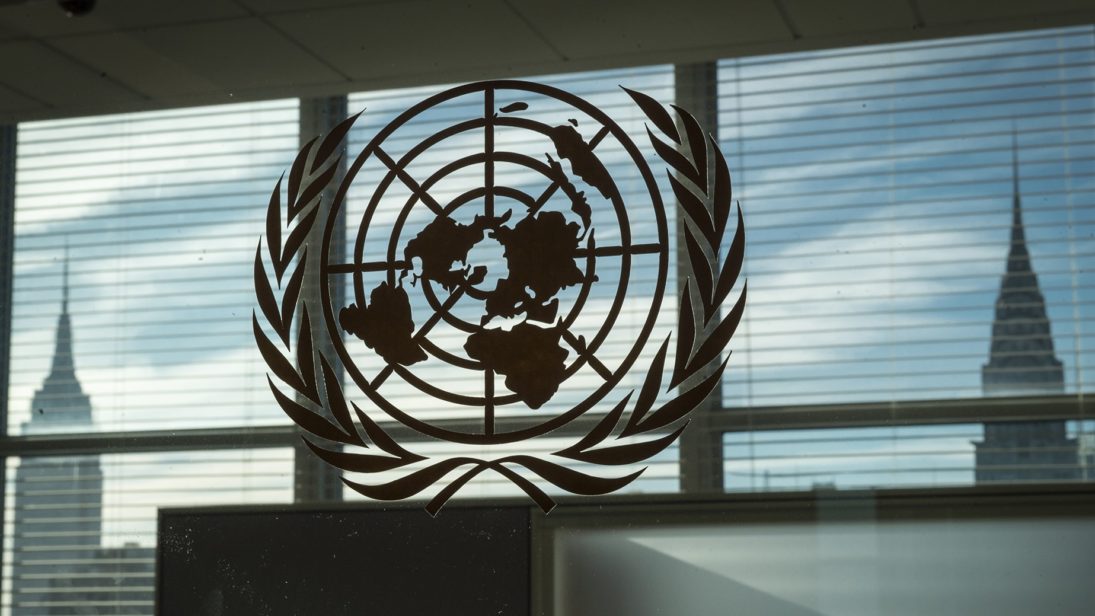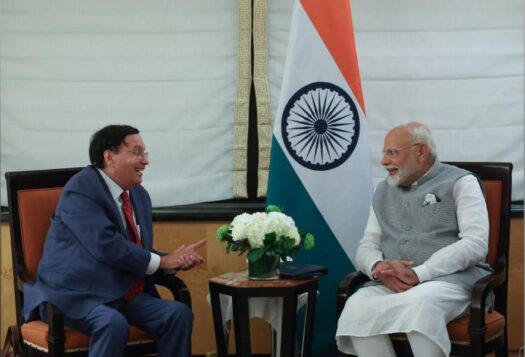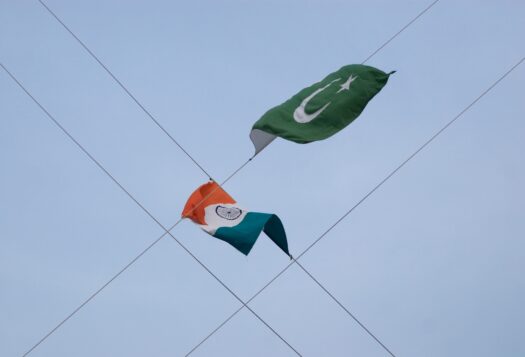
The Bulletin of the Atomic Scientists, through its Doomsday Clock—the metaphorical clock whose hour hand is set to midnight, representing nuclear armageddon—has assessed the current global nuclear situation to be the most dangerous since 1953, the year both the United States and the Soviet Union successfully tested the hydrogen bomb. This is not surprising considering geopolitical tensions worldwide have accompanied conventional arms build-up, nuclear modernization programs, and the increasing utilization of weapons that blur the conventional-nuclear divide. In view of the changing global dynamics and the abysmal state of nuclear arms control today, Ramesh Thakur in his Washington Quarterly journal article argues in favor of the normative utility of the Nuclear Weapons Prohibition Treaty (NWPT). The NWPT is the first legally-binding treaty that prohibits the possession of nuclear weapons by all signatories, with the intent of global nuclear disarmament. The text, which opened for signature at the United Nations headquarters in New York on September 20, 2017, has been signed by 53 states and ratified by three. Thakur posits that the NWPT is the most crucial “multilateral development on nuclear arms control in decades.” He argues in favor of the need for and relevance of “humanitarian principles,” which form the normative basis of the NWPT. Applying his arguments to the South Asian context, this article argues there is a considerable gap between Thakur’s perceived utility in the normative framework of the NWPT and its actual influence on India and Pakistan, which are both nuclear-armed states.
Summary
Thakur’s paper asserts that the NPWT’s value lies in its ability to “reshape the global normative milieu” related to nuclear weapons. In Thakur’s view, the normative utility of the NWPT stands in stark contrast to the the eroding value of the Nuclear Non-Proliferation Treaty (NPT), which has made no progress towards global nuclear disarmament. As opposed to the NPT, the NWPT helps non-nuclear weapons states (NWS) establish a norm stigmatizing and delegitimizing the possession or use of nuclear weapons as well as the practice of nuclear deterrence. Through the mechanism of the NWPT, non-NWS that have signed onto the NWPT have “reclaimed nuclear agency…and proclaimed an unambiguous prohibition norm.”
Thakur argues the NWPT may be used as a tool by non-western and small states to initiate “international humanitarian law against the will” of major powers, disrupting global norms on the political and military value of nuclear weapons. The legal effect of the NWPT would be to strengthen the disarmament norm in Article VI of the NPT by “removing the NPT-sourced legal and legitimizing plank for continued possession, deployment and doctrines of use by the NWS.” This is alluding to the historical context of the NPT: when the treaty was opened for signature in 1968 and entered into force in 1970, it allowed the UN Security Council’s five permanent members (P5), all NWS, to maintain their nuclear stockpiles while restricting all other states from going nuclear. The NPT was extended indefinitely in May 1995, crystallizing the difference between the P5 and all other states that had attained or would attain nuclear capabilities, such as India and Pakistan. The NWPT can address this division between the NWS and other nuclear-armed countries by bringing all countries under a single category, thus erasing the privilege of the P5 with regards to the legitimacy of their nuclear status.
Responding to the usual critique of the NWPT, the author urges others to not confuse the “normative impact of NWPT with the would-be operational results of a full-fledged Nuclear Weapons Convention (NWC).” He admits that the NWC will take many years to finalize. Therefore, in the absence of a functioning NWC, the NWPT should be viewed as a “humanitarian treaty” rather than an arms control treaty. He posits that anti-nuclear advocates and civil society can draw legitimacy from the NWPT to shape views of the domestic constituencies in their respective countries.
Points of Agreement
Thakur aptly covers the reasons for the erosion of the NPT’s normative value as well as the discrepancy between the portrayed role of NPT and its actual performance. The author asserts that the NPT has bestowed a sense of “international legitimacy” and “legal cover” to NWS to possess nuclear weapons. This argument rightly addresses the double standards of NWS and the range of pitfalls related to the simultaneous operation of the NPT and the NWPT, which has made difficult the prospect of “bringing the parallel NPT and NWPT streams into confluence.”
The author also rightly showcases the value of the NWPT in hardening “the normative boundary between conventional and nuclear weapons.” The paper offers a convincing rationale that states can attain “moral equivalency” through the NWPT by removing the distinctions between the five NPT-signatory NWS (China, France, Russia, the United Kingdom, and the United States), non-NPT states (India, Pakistan, and Israel), and the sole NPT defector (North Korea). He also raises the interesting point that the NWPT could push back against arguments that nuclear weapons, especially low-yield varieties, are becoming more usable, since even “limited” nuclear use will almost certainly lead to further nuclear use and massive destruction.

NWPT in South Asia: Testing the Treaty’s Normative Utility
Security Dilemmas and Threat Perceptions
It is worth testing Thakur’s arguments on the utility of a normative framework in the case of two nuclear-armed neighbors, India and Pakistan. This section points out a few impracticalities of such an approach, especially in the South Asian context. Notwithstanding the value of humanitarian principles to nuclear arms control discourse, the very existence of such a treaty does not ensure that India or Pakistan will feel pressured to eliminate their nuclear weapons. One of the problems with Thakur’s assessment of the NWPT’s normative utility is his disregard for threat perceptions and security dilemmas, both of which motivate states to build nuclear weapons in the first place.
In South Asia, tensions have been characterized by crossborder firing along International Border (IB) and the Line of Control (LoC) between India and Pakistan as well as a precarious situation along India-China’s Line of Actual Control (LAC). It is also important to mention that India’s nuclear focus has somewhat shifted towards Beijing, due to China’s growing military assertiveness in the region. Therefore, New Delhi believes the prospects for nuclear disarmament through the NWPT remain unachievable unless NWS states such as China and the United States are on board. In the same vein, Pakistan is unlikely to get influenced by such norms because its stance on nuclear issues is dependent on India’s decision. This is natural considering Pakistan pursued nuclear weapons with the intent to compensate for its conventional military gap vis-à-vis India. Thus, it is difficult to imagine a normative framework that is effective in pressuring these countries to forgo their nuclear stockpiles despite ongoing security concerns.
Such realities have played out in India and Pakistan’s responses to the NWPT. Undoubtedly, the NWPT has managed to address the shared concern of India and Pakistan on the NPT’s “discriminatory nature” for dividing countries as NWS and non-NPT NWS. Despite differences in their rationales, however, New Delhi and Islamabad each sided with other NWS to reject the NWPT. Notwithstanding India’s admiration of the “sincere effort behind the initiative,” it opposed the NWPT largely because it believes the Conference of Disarmament (CD) is the only forum that “has the mandate, the membership and the rules for embarking on the path to nuclear disarmament.” Pakistan similarly rejected the NWPT in favor of the CD, saying the NWPT failed to “take on board the interests of all stakeholders” and address the “vital security considerations” of the participants.” Since the NWPT is not universal and lacks a mechanism for verifying the commitments made therein, neither India nor Pakistan is likely to sign onto the treaty due to the prevailing security conditions in South Asia.
Insufficient Leverage of Small States
The author also argues that non-nuclear states can utilize the framework of the NWPT to influence the behavior of nuclear-armed countries. In South Asia, this could mean that the NWPT would permit non-nuclear countries such as Sri Lanka, Nepal, and Bhutan to exert moral pressure on India and Pakistan to give up their nuclear weapons. This appears to be an unrealistic expectation, as became evident when Sri Lanka decided to reject the NWPT owing to pressure from Washington. Reportedly, Sri Lanka agreed “in return for America’s tolerance and patience on war crimes.” This development proves that the constraining dynamics of regional and global politics often does not grant sufficient leverage to small states to influence larger states on critical issues like the possession of nuclear weapons. These states tend to interact with great powers and regional hegemons on a range of bilateral and multilateral issues in a manner that best secures their interests in the region. Given these constraints, smaller South Asian states will certainly find it difficult to exercise enough pressure on India or Pakistan to give up their nuclear stockpiles.
Domestic Political Structures
Furthermore, Thakur claims that the NWPT will enable anti-nuclear advocates to “alter the prevailing domestic normative context in their countries.” At first, this line of reasoning seems somewhat cogent. However, the merit of this argument dissipates when accounting for the domestic structures of states that possess nuclear weapons. For instance, a vast majority of Indian and Pakistani populations support their nuclear weapons program. It is therefore difficult to fathom how the normative value of the NWPT might reverse positive public opinion. Even if we assume that a substantial part of the population turns against their country’s nuclear weapons, it remains unclear if there is a direct link between public opinion and nuclear decision-making in India or Pakistan.
At the same time, one must acknowledge the potential of the NWPT to instill new life in the civil society movement against nuclear weapons in the subcontinent. As recommended previously on South Asian Voices, the NWPT can inspire greater civilian participation and also “cross-border dialogue” on the subject, with the hope that it brings about a change in the normative context in the medium or long term. However, it is unlikely that an invigorated civil society will trump security and domestic political concerns.
Conclusion
The issues brought out by Ramesh Thakur deserve attention and greater discussion. Without doubt, it is necessary to carve a normative approach towards nuclear weapons, especially given the worrying trends in current world politics. However, it seems that he underestimates the powerful logic behind the fundamentals of regional or world politics, which continue to be driven by realpolitik and security threat perceptions. It is imperative for analysts to maintain a happy medium between how the world should function and how it actually functions. In the absence of harmony between these two axes, it is unlikely that the NWPT will lead to global nuclear disarmament, despite its high normative value.
Editor’s Note: In an ongoing series aimed at bridging the divide between policy analysis and academic scholarship, SAV contributors review recent articles and books published by leading scholars to evaluate the latest theoretical and analytical debates on strategic issues and their implications for South Asia. Read the series here.
***
Image 1: United Nations Photo via Flickr (cropped)
Image 2: UN Geneva via Flickr


